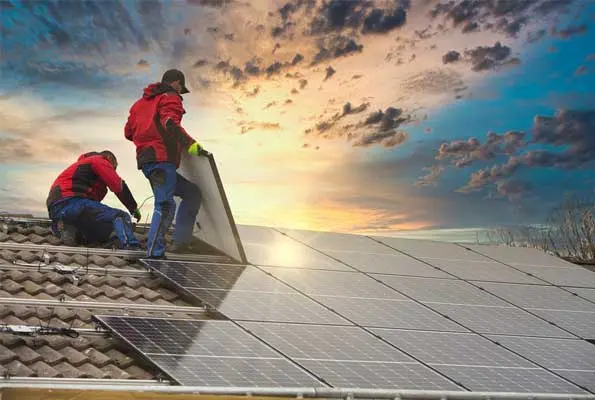A recent report published by the Global Energy Monitor states that Arab nations have produced 19 gigawatts of renewable energy, up 57% from mid-2022 to mid-2023. Additionally, the research projects a 50% growth by 2024.
To replace its reliance on gas, the region still needs to increase its capacity for renewable energy by a factor of 20.
Although the report points out that this growth is relatively modest in comparison to other locations and that its proportion is minor given the significant importance that oil and gas play in the region, it is nevertheless a promising step for a region that is well-known for its fossil fuel industry.
The research also notes that all but two of the Middle East and North Africa (MENA) region’s goals for wind and solar energy were raised in 2022, with eight of them aiming to increase their capacity by at least three times what it was a year earlier.
The Arab region’s unique geographical location does not always make it the best place to produce solar energy, despite its extensive deserts and mostly sunny days of the year.
Because of shifting atmospheric dynamics and rising temperatures, researchers warn that the ability of MENA states to produce solar energy will be negatively impacted by climate changes brought on by global warming.
Research shows that the Middle East’s hot, arid areas, which have a lot of potential for solar energy production, are also the most susceptible to larger variations in solar radiation.
Variations In Solar Radiation
Researchers have cautioned that an increase in Earth’s surface temperature could result in a reduction in solar radiation overall and a rise in overcast days, despite notable advancements in the renewable energy industry.
The Earth’s atmosphere may become more humid, more aerosolized, and more suspended particulates as a result. The Middle East and the American Southwest, which have some of the highest potential solar energy output, are hot and arid regions that are more susceptible to variations in solar radiation levels, according to Ahmed Abdel Rahim, an assistant professor of climatology at Mansoura University.
Some individuals think that because global warming is increasing Earth’s temperature, countries will be able to produce more energy by heating their atmospheres. Abdel Rahim nonetheless emphasizes the gravity of climate change’s repercussions.
Solar panels need to be cleaned regularly since dust storms reduce their purity. Severe heat also reduces solar panel efficiency in producing electricity.
About 25 degrees Celsius is the ideal temperature for solar panels, according to Ahmed’s explanation to The New Arab.
“An increase in temperature by one degree Celsius above the reference temperature of 25 degrees reduces the efficiency of solar panels by 0.5%,” the official stated further.
The efficiency of solar plants will be directly impacted by the increase in temperature brought on by climate change. It influences the quantity of humidity, aerosols, and suspended particles in the atmosphere, in addition to the efficiency of solar panels.
This may result in variations or sporadicity in the quantity of solar radiation that reaches the Earth’s surface, hence maintaining solar energy output.
Little variations in solar radiation can have a big impact on the likelihood of energy stability, particularly in areas where photovoltaic energy production is expanding quickly.
This is especially true in arid regions like the Arab region that have big plans for the future.
“As atmospheric turbulence increases and temperatures rise in dry regions like MENA, dry soils are likely to generate greater amounts of aerosols and dust that would reduce solar radiation,” Ahmed stated.
Additionally, dust and aerosols can contaminate photovoltaic panels, preventing them from collecting solar radiation and producing electricity.
According to a June 2020 study published in the journal Nature Sustainability, suspended matter lowers solar panel efficiency by more than 50% in highly polluted and dry regions such as North Africa and the Middle East. However, getting rid of them can restore the efficiency to more than twice what it was before the contamination.
Overcoming The Challenge
According to a study that appeared in the September 2020 issue of the journal Nature Communications, more thorough, accurate, and comprehensive evaluations are required to determine the losses that each country, such as Egypt or the United Arab Emirates, experiences when producing solar energy.
According to the study, energy storage is the best strategy for Egypt and other Middle Eastern nations to combat the hazards posed by climate change.
Another analysis that was released in the October 2020 issue of the journal Nature asserts that there will be a significant shift in electricity transmission systems in the ensuing decades.
The report characterizes this shift as “making current energy storage solutions, such as batteries, mere technologies of the past,” altering our understanding of energy access and use.
Cosmopolis predicts that over the next 40 years, the loss in photovoltaic energy production will reach roughly 5 to 10% of the potential production volume based on his studies of solar radiation in Egypt.



